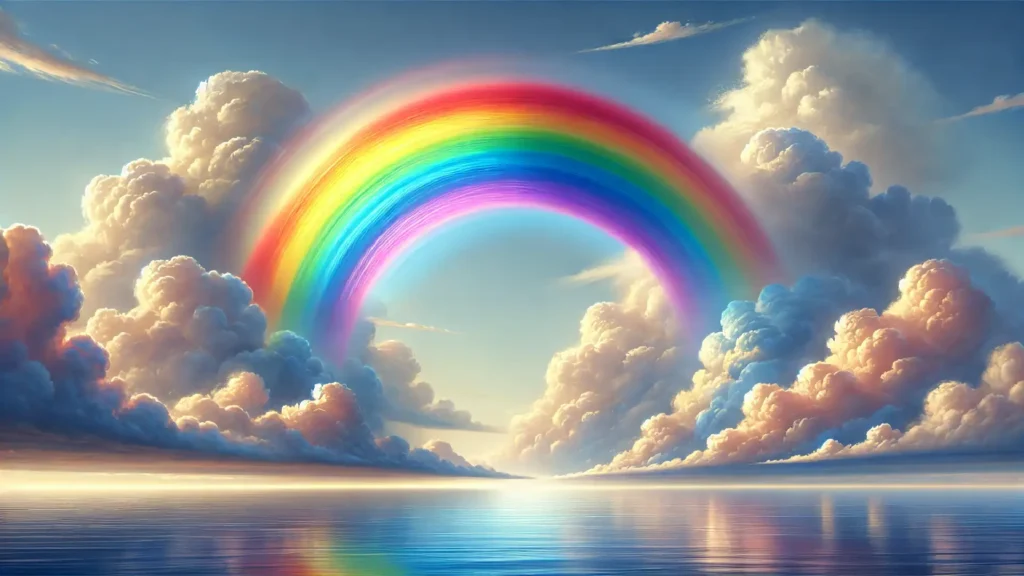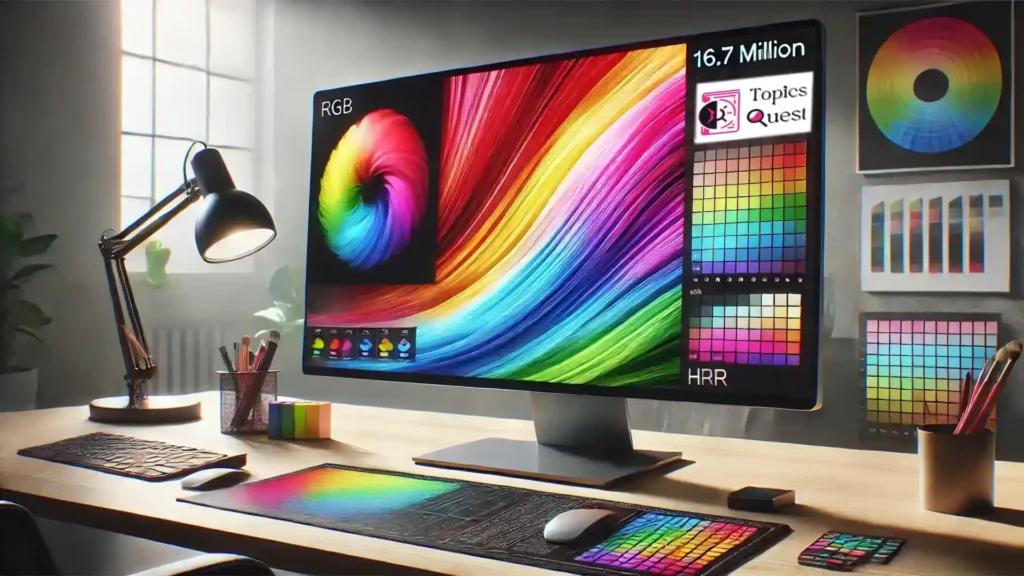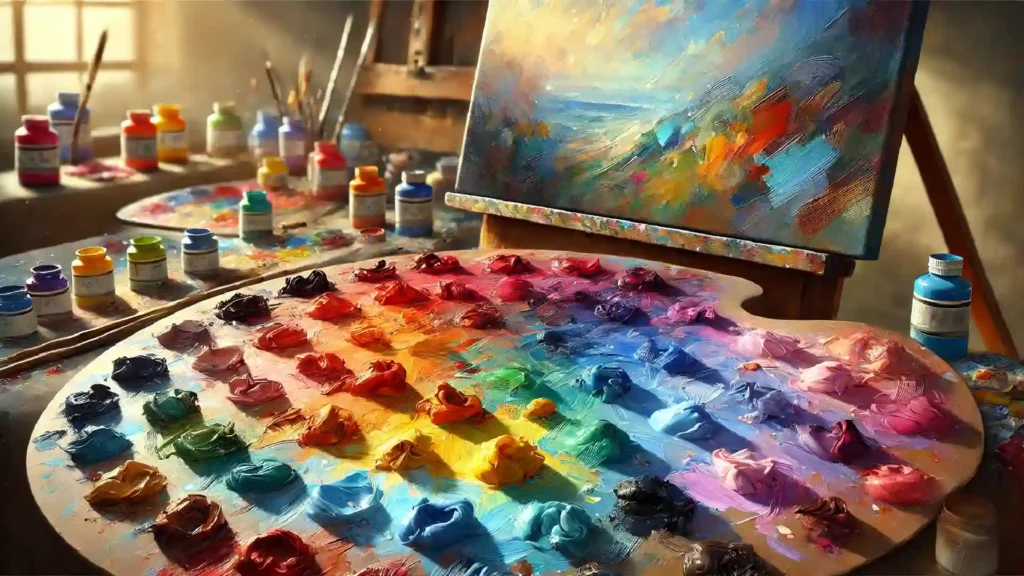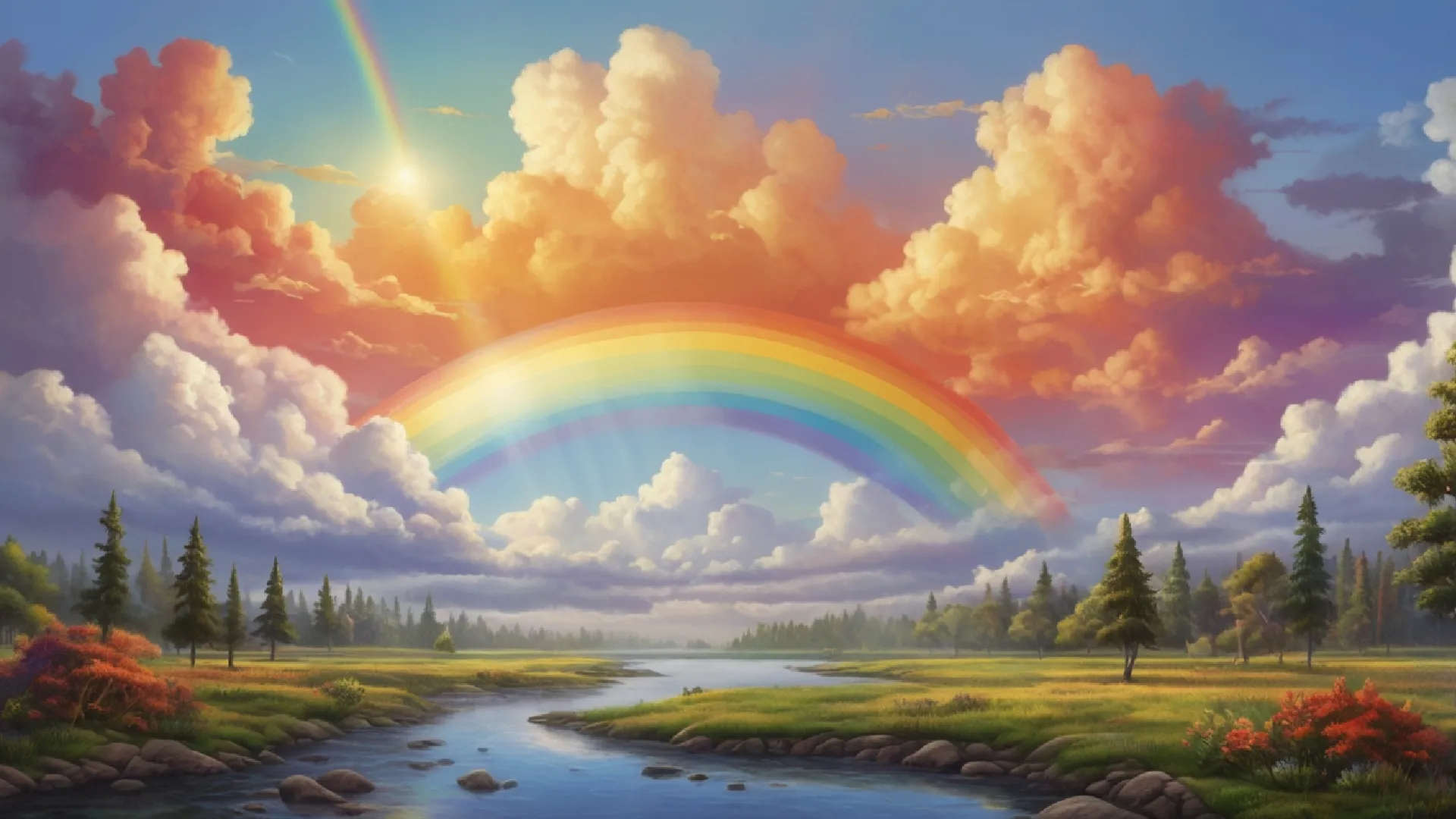|
Getting your Trinity Audio player ready...
|
Colors surround us every day, from the beautiful flowers in the garden to the bright sky above us. They influence how we feel, how we think, and even how we interact with the world. But have you ever wondered, how many colors are there? The question might seem simple, but the answer is much more complex than you might think. From the colors in a rainbow to the countless shades that exist in the world, colors are an endless source of fascination.
In this article, we will take a journey through the world of colors. We will explore how many colors are visible to the human eye, how different shades and tones are created, and how color affects our lives. By the end of this article, you will have a deeper understanding of the vast world of colors that exist all around us.
Understanding Color and Its Perception
Before we dive into the question of how many colors are there, it’s important to understand what color is and how we perceive it. Color is the result of light waves that travel through the air. When light strikes an object, it reflects off the object and enters our eyes. Our eyes contain special cells called cone cells, which allow us to detect light and turn it into the colors we see.
The human eye can detect a wide range of colors, but how many colors can we actually perceive? The answer is that we can see approximately 10 million colors. This is because the human eye is capable of distinguishing various wavelengths of light, which correspond to different colors. The combination of red, green, and blue light can produce millions of unique colors, and this is the basis for the RGB color model used in digital screens.
Table of Contents
The Spectrum of Visible Colors
One of the most fascinating aspects of color is how it exists in a spectrum. When light passes through a prism or water droplets in the sky, it bends and splits into the colors of the rainbow. These colors are red, orange, yellow, green, blue, indigo, and violet. These are the seven colors that we commonly associate with a rainbow. But if we look closely, we will see that the rainbow contains many more colors than just these seven.
While we often talk about the seven colors of the rainbow, the truth is that the rainbow is a continuous spectrum. This means that the transition from one color to the next is smooth, and there are many subtle shades and variations that exist between the primary colors. For example, if you look closely at the rainbow, you may notice a wide range of greens or blues that blend together. The colors don’t stop at seven—they continue and overlap.
So, how many colors are there in a rainbow? The answer is that there are many more than just seven. The rainbow is just a simplified way of breaking down the full spectrum of light into easily recognizable colors. In reality, the rainbow is a rich and complex display of color that contains hundreds or even thousands of variations.
How Many Shades of Color Are There?
Colors are not static. They can be modified in different ways to create new colors. This process is called color modification, and it involves changing the hue, shade, or tone of a color. For example, you can make a color lighter by adding white, or darker by adding black. These changes create different shades of color.
Let’s take the color blue as an example. Blue is a primary color in the RGB color model, but when you add white to it, you get a lighter blue, often called a tint of blue. On the other hand, if you add black to blue, you get a shade of blue, such as navy or midnight blue. The same concept applies to every color. You can create countless shades, tints, and tones from just one base color.
For instance, purple is a color that has many variations. If you ask how many shades of purple are there, the answer is many. Purple can range from deep, rich purples to lighter shades like lavender. There are also variations of purple that mix in other colors, such as pinkish purples or bluish purples. These variations are what make color so interesting and diverse.
So, when you ask, how many shades of color are there, remember that the number is virtually limitless. Every color can be modified to create many shades, tones, and tints, giving us an endless range of hues to enjoy.

How Many Colors Are There in the Whole Universe?
When we talk about how many colors are there in the world, we are generally referring to the colors that humans can see. However, the truth is that the total number of colors in the universe is far greater than what we can perceive. There are colors that exist outside of the visible spectrum of light, such as ultraviolet and infrared light, that we cannot see with the naked eye.
In fact, some animals can see colors that humans cannot. For example, the mantis shrimp, a marine animal, has eyes that can detect ultraviolet light and a broader range of colors than humans. This means that the total number of colors in the world is infinite because it includes both the visible colors and the ones beyond our perception.
So, while humans can see a certain number of colors, the true number of colors in the universe is much greater. There are countless colors that exist beyond the limits of human vision, making color a far more complex and expansive phenomenon than we might initially think.
The Role of Color in Our Lives
Colors are not just beautiful—they also play a crucial role in our daily lives. We use colors to express emotions, communicate ideas, and create a sense of identity. For example, certain colors can make us feel calm or excited, happy or sad. This is why color psychology is such an important field, especially in areas like marketing and design.
For instance, blue is often associated with calmness, trust, and stability. This is why many healthcare brands use blue in their logos and websites. Red, on the other hand, is a color that represents energy, passion, and urgency. It is often used in advertisements to grab attention or encourage action.
In nature, color plays an essential role in survival. Bright colors can serve as a warning to predators, signaling that an animal might be poisonous or dangerous. On the other hand, animals like chameleons can change their color to blend in with their environment, helping them avoid predators.
How Many Colors Are There on a Computer Screen?
If you’ve ever wondered how many colors are displayed on a computer screen, you might be surprised to learn that there are 16.7 million colors that can be shown on most modern displays. This is due to the RGB color model, which uses red, green, and blue light to create colors on digital screens. By combining different intensities of red, green, and blue, a vast range of colors can be produced.
In fact, the RGB color model is the basis for most color displays, from computer screens to television sets. Each pixel on a screen can display millions of different colors, thanks to the varying levels of red, green, and blue light. This technology has made it possible to create vibrant, colorful images and videos that we can enjoy on our devices every day.

How Many Color Shades Are There in Paint?
When it comes to how many colors of paint are there, the answer depends on the brand and the color mixing process used. Some paint companies offer thousands of different shades of color. For example, you can find hundreds of shades of blue, green, or yellow, each with its own unique tone and intensity.
The color wheel is often used by artists and designers to understand how different colors interact with each other. On the color wheel, primary colors (red, blue, and yellow) are placed at equal distances from each other, with secondary and tertiary colors filling in the gaps. This allows artists to create a wide range of colors and experiment with different combinations.
Paint companies often provide color samples that show how different shades of the same color can look when applied to a wall or surface. This is important because the same color can appear differently depending on the lighting and the surface it’s applied to.

Conclusion:
How Many Colors Are There?
The world of color is vast, diverse, and ever-expanding. From the 10 million colors that humans can see to the infinite number of colors that exist beyond our perception, colors are an essential part of our experience. Whether we are admiring the colors of a rainbow, selecting the perfect paint for a room, or enjoying the vibrant hues on a computer screen, color plays a significant role in how we interact with the world.
So, when you ask, how many colors are there, the answer is simple yet complex. There are millions of colors, and their number seems almost limitless. Each color has its own unique beauty, and the world is full of countless shades, tones, and hues waiting to be explored.
For further details on the science of color, you can visit the Wikipedia page on color.
Colors are all around us, influencing how we see the world—just like time shapes our daily routines. Whether it’s the countless shades we can see or the way we measure days and weeks, both color and time help us make sense of life. If you’re curious about how time is structured in education, check out our article on how many weeks are in a school year.
Frequently Asked Questions (FAQs)
How many colors are there in the world?
There are millions of colors in the world! Humans can see about 10 million different colors, but if you include colors we can’t see (like ultraviolet or infrared), the total number of colors is endless.
How many colors are in a rainbow?
A rainbow is typically thought to have seven colors: red, orange, yellow, green, blue, indigo, and violet. But in reality, a rainbow is a smooth blend of many different colors, with many shades of each color in between.
How many colors can humans see?
Humans can see around 10 million different colors. This is possible because our eyes can detect different wavelengths of light. Our brains then process these wavelengths as various colors, from reds to blues to greens and more.
What is the difference between a shade and a tint?
A shade is when you add black to a color, making it darker, like navy blue. A tint is when you add white to a color, making it lighter, like light pink. Both give you variations of the same base color.
How many colors are there in a Skittles pack?
A regular Skittles pack has five main colors: red, orange, yellow, green, and purple. However, these colors can sometimes vary depending on the flavor or special edition packs, so you might find more unique shades in different varieties.
How do we see colors?
Colors come from light. Light travels in waves, and different wavelengths of light are perceived as different colors. When light hits an object, it either absorbs or reflects certain wavelengths. We see the wavelengths that are reflected, and that’s how we perceive colors!
How many different shades of purple are there?
There are many shades of purple, from light lilacs and lavenders to dark, rich purples like violet or plum. The possibilities are endless, depending on how much white or black is added to the purple.
Can animals see the same colors as humans?
No, animals see colors differently! For example, dogs can only see a limited range of colors, mainly in shades of blue and yellow. Some animals, like the mantis shrimp, can see colors that humans cannot, like ultraviolet light, giving them a much wider range of color perception.










